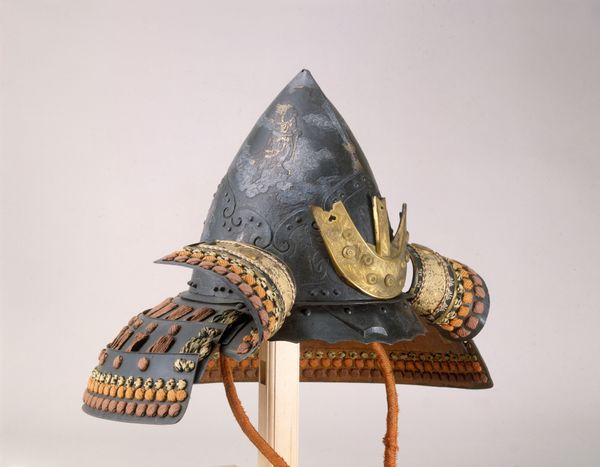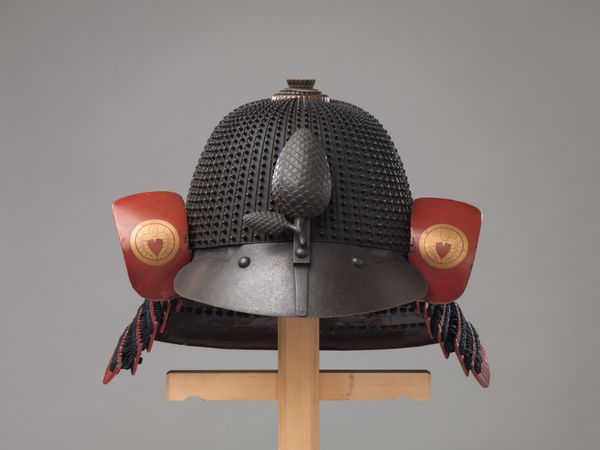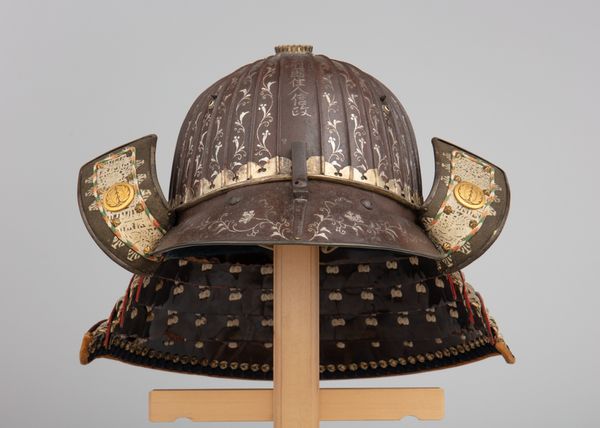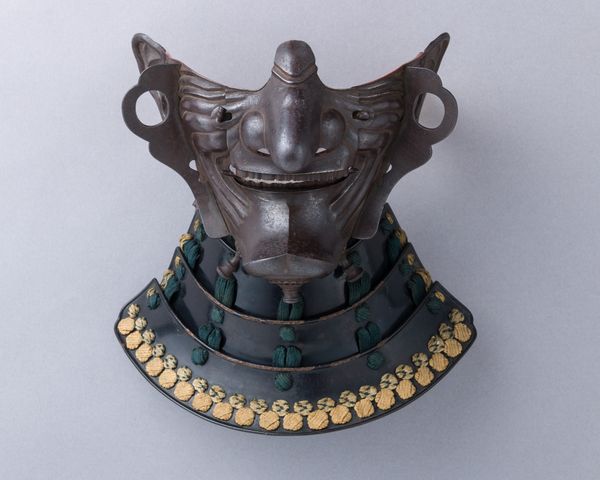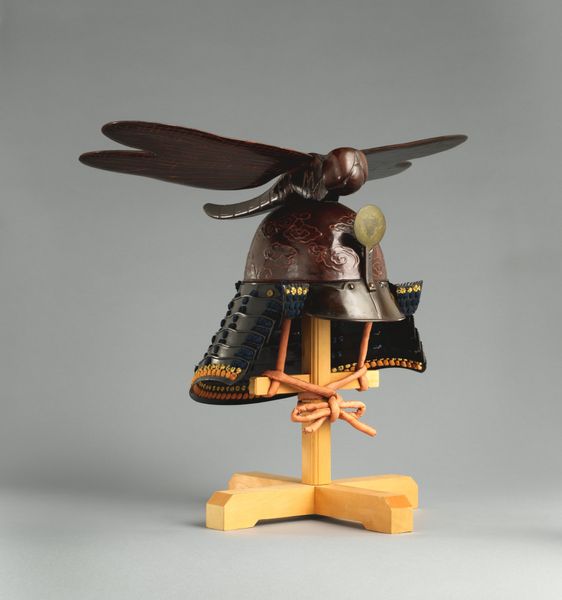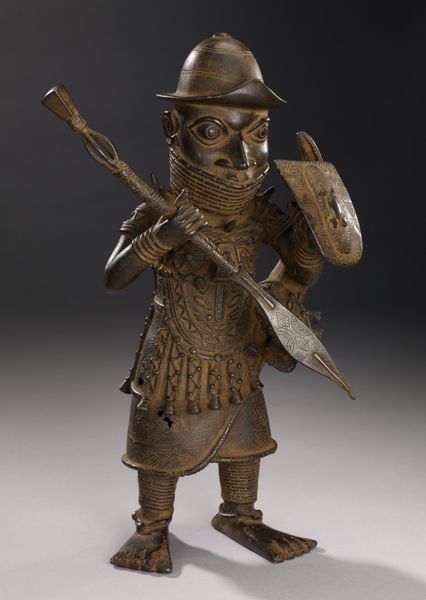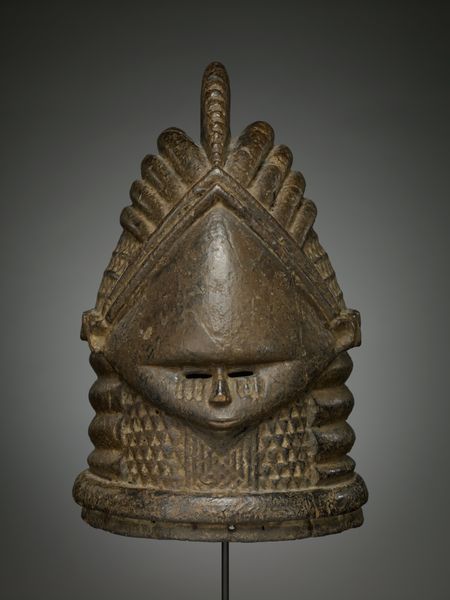
metal, sculpture
#
portrait
#
medieval
#
metal
#
asian-art
#
japan
#
sculpture
#
armor
Copyright: Public Domain
Editor: Here we have a rather unusual helmet. It’s called "Helmet in the Shape of an Eggplant," made in the 17th century by Saotome Ietada. The medium is metal, which I guess makes sense for a helmet. I’m intrigued by how playful it is, considering it's a piece of armor. What stands out to you about this object? Curator: Considering the social context, this isn't just about protection. Think about the labor involved: the hammering, shaping, and decoration of the metal. This helmet moves beyond function. It becomes a statement about wealth, power, and the commissioner’s taste. What does the choice of an eggplant suggest to you about status and material culture? Editor: Well, I wouldn't expect an eggplant to be high status! Maybe it's a sign of prosperity – access to luxurious foods? Or perhaps the helmet maker wanted to poke fun at the wealthy commissioners? Curator: Precisely. The samurai class enjoyed monopolies of power, expressed through martial skill and costly armour, while mercantile success depended upon production chains. An eggplant form references common culture, yes, and might also play with the status of other armor that's considered, for example, intimidating, expensive, and strong. Editor: So, it’s both a functional object and a commentary on social status, using accessible imagery. Curator: Yes, and examining its construction tells us about both the culture of production and consumption, moving this helmet beyond just a static display object. Editor: That really changes my perspective. I was initially focused on the unusual form, but now I see how it's embedded in its social and economic environment. Thanks! Curator: Indeed. Recognizing the materiality and the work put into crafting everyday objects is the first step in understanding broader meanings of art.
Comments
No comments
Be the first to comment and join the conversation on the ultimate creative platform.
